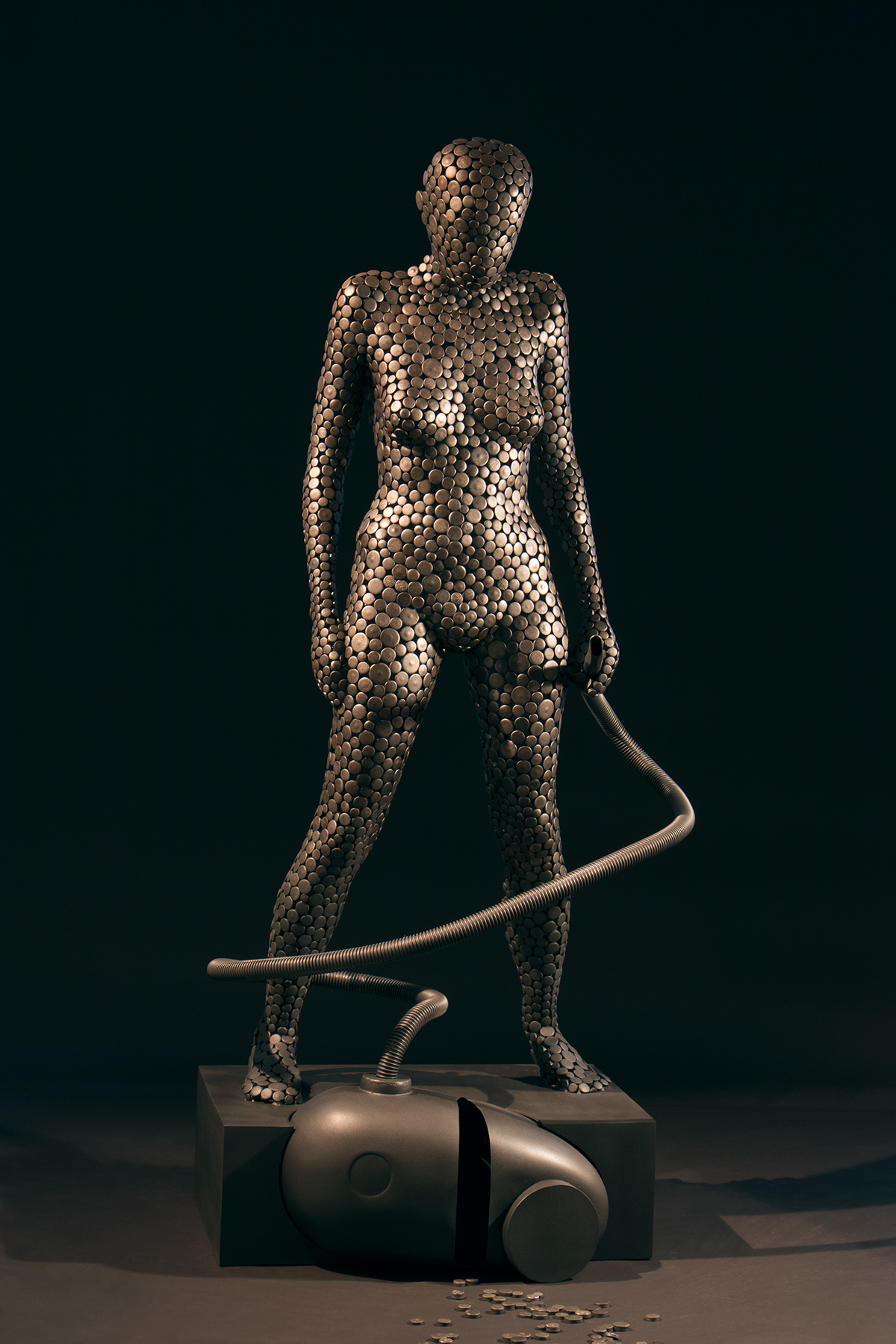

Soul-frame
Áron Zsolt Majoros’s works are body-negatives, body-crusts multiplied by using sample-elements creating silhouettes of bodies. The title of the exhibition, `Soul-frame`, refers to the artist’s intention to find the human soul within the emptiness enclosed in the body-hulls. Experiencing the tough reality of today’s world we cannot help but find this intention of the sculptor and the implementation of his ideas highly authentic.
Majoros`s works reflect on the continuously changing nature and the significant shifts of sculpture in the 20th century, according to which an object placed in a space, referred to as a sculpture, made of a certain material, formed following artistic intentions states something strikingly different from works of previous times.
The sculpture of Áron Zsolt Majoros has the same subject, the same medium as artworks of this field of art has had throughout centuries and millennia: men and nature, natural creatures or phenomena.
How had the concept of sculpture been defined before Marcel Duchamp? `A branch of art which presents the creatures or objects of nature in their real three dimensional form as they exist in reality. The human figure dominates its thematic spectrum.` We can also see that in spite of the prevailing dominance of the presentation of human figures, there are pieces, many on the verge of abstractions, referring to mussels and turtles.
The human figures built up of welded lamellas, vertical or horizontal layers of plates, steel waste, tiny discs, small metal elements create an airy atmosphere despite their heavy material, as they are often body-covers, hulls or layered disc constructions whose essential element is the lack of weight, the transparency of bodies and the transparency revealed within the bodies. This emptiness however is affected by the movements of the viewers, the changes of their viewpoints, as a result of which a silhouette is unfolding, which is known for not being dense or statuesque. Thus, sculpture focusing on heavy weight, closed structures and intact forms has shifted to become the illusory medium playing with fantasies of figure sculpting. Still Áron Zsolt Majoros’s figures are all-time, faceless humans lacking their own personality. They are like prototypes of human beings, like an everyman, the only thing we know about them is if they are male or female, and they attempt to break out of their ordinary existence by their postures, gestures, everlasting paralyzed movements.
To keep Áron Zsolt Majoros’s sculptures in mind, it is enough to repeat one word, the name of the thin disc adapted to the forms of the human body and creating hidden spaces to provide place for the whoosh of the soul. Let the viewers of Áron Zsolt Majoros’s sculptures and their memories be followed by this word: lamella, lamella, lamella.
Áron Zsolt Majoros, sculptor is a young artist having graduated from the Hungarian University of Fine Arts, Budapest 10 years ago. He has been exhibiting in numerous solo and group shows, thematic exhibitions, art fairs from London to Istanbul, and he has also actively participated in several art colonies. His sculptures can be found in many international museums and art collections from Mexico to China.
Tibor Wehner /art historian/

